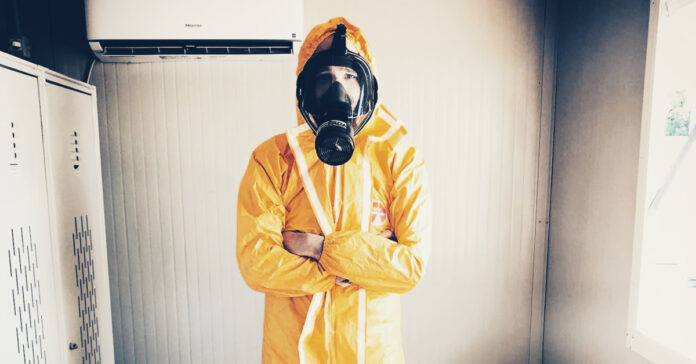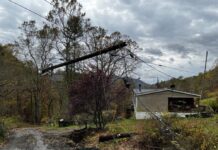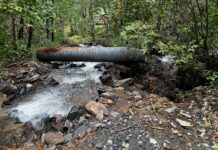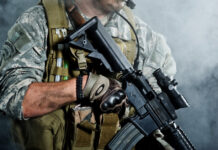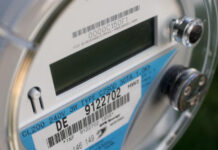Whether you call them protective masks, personal protective equipment, or gas masks doesn’t matter, they all do the same thing: filter the air you breathe to protect you from airborne dangers. But do you, as a prepper, need one?
When you have filled your basic preps (food, water, shelter, first aid, self-defense and communications), then you can consider buying a gas mask and even a protective suit. That consideration should include a realistic evaluation of what threats you might face. You may need something else more than a gas mask.
If you live near a chemical plant or rail line, owning a gas make might make sense. After nuclear war, wearing a gas mask can help prevent you from inhaling fallout. Most will also protect you from biochemical warfare. If you live in an urban area that sees frequent protests along with a police response that might include pepper spray, pepper balls shot from paintball guns, mace, or teargas, one should probably be on your list.
Keep in mind that while masks also protect your eyes, they do not protect you from fire and do not include their own oxygen supply.
I have a box of gas masks, Tyvek suits, yellow rubber booties and black army surplus chemical gloves. I’ve never needed them, but they are on the shelf, just in case.
Using a Gas Mask
These days, the rugged male prepper almost always has facial hair. Well, that big beard will keep your protective mask from making a good seal, meaning it won’t be very effective. Consider packing a pair of scissors and a razor in your gas mask kit. If you need a gas mask, you will need a clean-shaven face.
It’s also important to try on and adjust the fit of the mask before you need it. In a family of four, you may need two or three different size masks. Petite women and youth often need smaller masks than larger adults. Infants and toddlers require suits that have filtered air pumped into them with a battery-powered blower. I’ve seen these sold in Israel, but rarely in the U.S. If you are not on the move, you may be better off setting up some kind of air-tight tent or room into which several people can stay with filtered air pumped into them.
Breathing through a gas mask can be laborious, especially if you do any exercise in them. In case this isn’t obvious, the filter that cleans the air you breathe also reduces air flow. You can suck air in, but it takes work. You may find yourself panting or gasping. If you exercise and your rate of your respiration increases, it will be even more difficult to breathe when wearing a gas mask and you may have to stop and catch your breath.
I wear a full gas mask when treating my beehives with oxalic acid vapor, and it’s annoying. I find myself looking forward to the treatment ending so I remove this mask and breathe freely again.
If you plan to bug out in a gas mask, better hope your car works. A moderate walk will become a strenuous hike when you must take every breath through a layer of activated charcoal and several layers of different substrates. Just another reason it’s important to be in good physical condition.
Masks and Firearms
Besides going on a hike with a gas mask on just to see how you handle it, I recommend firing a gun with it on. The mask may affect how you shoulder a rifle, your cheek weld, and your ability to use optics. It’s better to figure this out now than when you need to defend yourself while wearing a gas mask. Last week, I talked about why testing your preps is important. This is a good example. In addition to practicing how to don your mask and get a good fit, you must know how to change the filter, shoot from it, and use the drinking tube (if you have with one).
Some masks have a wide viewing area, but others will obscure your vision if the mask has small eye-holes. For example, you may lose peripheral vision. It’s good to learn this before the SHTF and determine how to compensate for blind spots by keeping your head on a swivel.
When to Chang the Filter
It would be great if you could just set your phone to remind you to change your filter in eight hours, but that’s not how it works. Your filter’s operating life will depend on a host of factors:
- What chemicals it is absorbing
- What concentration of chemicals in the environment, which is measured in parts per million (PPM)
- The amount of dust or particulate matter in the air
- How many extra filters you have
In general, you should change your filter when one of two things happens: It becomes difficult to breathe (this implies your filter is clogged) or you taste or smell the chemicals.
Let’s say you are crossing an area with a known chlorine leak, so you put on your mask. If you can smell the chlorine right away, that would imply your mask is not fitted properly. When a mask works for hours and then you notice the smell, that’s a sign your filter is nearing the end of its useful life and you should change it. If your eyes or nose start to run or burn, then you should change your filter immediately.
You have spare cartridges, don’t you?
Buying masks and Cartridges
I suggest a mask with a NATO fitting, as these are the most common filters. You can buy cartridges from multiple vendors, and if they have a NATO screw, they should fit your mask.
You can buy civilian masks, military masks, and surplus masks. The latter are suitable for Halloween costumes but fall into the “better than nothing” category if we’re talking survival use. Of course, if that’s the only mask you can find that will fit your seven-year-old’s tiny head, then that’s what you have to get.
One difference between civilian and military masks is how the mask itself reacts to exposure to corrosive gases and chemicals like mustard gas. They make most civilian masks out of softer, more pliable materials and are more comfortable to wear, but can’t resist corrosive gases. Military masks can withstand these chemicals. You need to decide which is best for you.
The number and location of filter outlets is also something to consider. Some masks will have allow a filter cartridge to fit in one and only one location. Other will fit up to three. This can be useful if you are going to be shooting a long gun because you can place the filter where it will not interfere with your long gun.
Finally, read the manual and know how to decontaminate, clean, handle, and store your mask. Storing your filters correctly is also important to keep them from wearing out prematurely.

